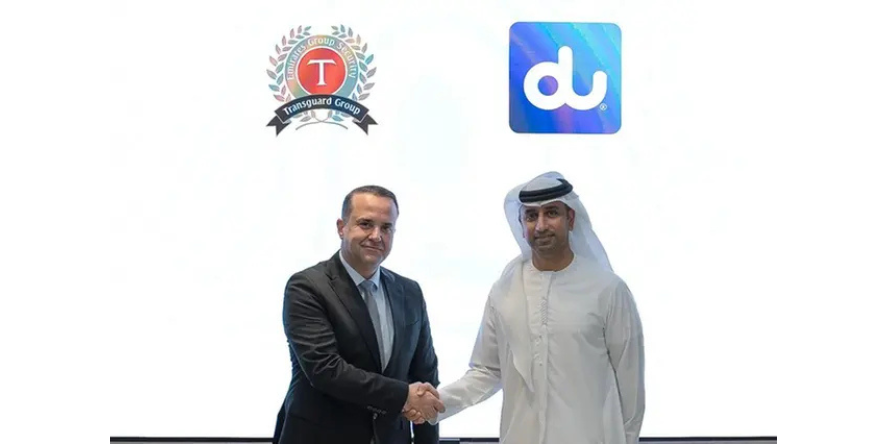Construction companies manage technology stacks including a dizzying array of construction software, hardware, on the cloud, on premises, and proprietary systems. These involve every part of the enterprise – from engineering and design, field management, materials management, estimating and tendering, document control, cost control, payroll, to finance, invoicing, and administration.
When we also consider emerging trends and new technology such as drones and wearables, robots, sensors, and IoT, the applications being managed by any construction firm are likely to increase in the hundreds.
In 2018, McKinsey mapped the technology ecosystem which included thousands of companies offering technology solutions within the construction industry. The number of companies developing technology included a staggering 314 in Building Information Modelling (BIM) software; 484 producing document management tools; and 205 producing project scheduling software.[1] Three years on, these figures must have grown considerably.
The technology choices for the construction sector are huge as is the effort to manage them. All these technology applications should be making our lives easier; however, they risk incurring technical debt. Disparate software solutions and hundreds of applications increase software entropy, which pushes against the construction industry’s lean and agile endeavors for project delivery.
Is there a magic number for how many applications a company should adopt?
Magic number for managing your construction tech stack
It’s worth taking a step back and looking at where this data comes from.
Many large construction projects demand client-mandated applications for technical files, collaboration, project management, project controls, scheduling, and handover.
Construction companies have more control over their backend systems such as financial HR, CRM, procurement, payroll, and administration. These systems need to comply with local labour and financial regulations.
In the field, site management tools such as safety, quality, and environment are also generally within the control of the business. These systems need to comply with local construction standards.
No construction company’s technology stack can sit in isolation of the clients they serve nor the requirements of local regulations. Equally, it is clear that no one software solution can replace or bundle all the functionalities of a construction business.
How do construction companies remain lean and agile and bring order to avoid software entropy with so many software solutions and disparate applications? There are logical clusters that group the data and functionalities within the construction industry.
In the field, there are tech solutions for safety, quality, task management, scheduling, or timesheets. When isolated as point-to-point solutions, their utility is limited. Operators in the field need to manage half a dozen applications – the context shifting and complexity switching between systems are cumbersome. Equally, the data is of limited value when it is not shared in real time.
That’s where platforms come in – integrating big data, multiple data sets, data formats, and applications into a single software environment. Seeing the opportunity to deliver customers greater service along the value chain, tech vendors have clustered their solutions into platforms – offering end-to-end services.
For example, companies offering design software may add document management and project management to their suite of functionalities. Or vendors focused on project collaboration are extending their offerings to costing, scheduling, or procurement capabilities.
Digital platforms have a network effect offering greater value to the user than the sum of their parts.
So, is there a magic number for managing a construction technology stack? Six, seven, eight platforms? The answer is, ‘it depends’.
It depends on where the construction company is on its digitalisation journey. For companies taking their first steps into digital efficiency, they will try simple and dedicated applications. As companies progress along their digital transformation journeys, they will move towards a platform approach to yield the benefits of integrating and leveraging their data through data analytics.
No matter where the construction company is on its digitalisation journey, one thing is certain – rationalising the number of applications and moving towards platforms make the construction technology stacks easier to manage.
But not all platforms are made equal. When selecting a platform, a key consideration is its ease of connectivity and integration.
Avoiding the silo trap – connecting data with cloud systems and APIs
Historically, construction companies have relied on closed systems, in-house developments, desktop applications, and on-premise servers to manage their operations. The transfer of accurate data was tedious and manual – relying on spreadsheets, manual data entry, and re-entry. The ability to connect data quickly and efficiently is a relatively new phenomenon in the industry.
The primary enabler and accelerator is the emergence of cloud-based platforms combined with Application Programming Interface (APIs). APIs enable data from different systems to be exchanged automatically. APIs are already being used by many top tier construction companies to reduce costs and improve efficiency.
Data exchange evolution
Accelerating data exchange with plugins and marketplaces
The challenge with connecting data through APIs is that it requires coding skills, maintenance by clients, and a solid understanding of how both software work. To solve this issue, tech vendors have started to build plug and play integrations. They are fully automated and require no maintenance or coding to integrate with systems. This allows construction customers to connect their existing systems easily.
Just as you can connect your email client with Dropbox and share your data between applications, plugins remove the friction of construction data flowing between systems. For instance, with automated plugins, check in procedures can easily integrate thermal imaging and biometrics technology. Project collaboration platforms can also enable data collection and easy integration with field data.
Opportunities are limitless. In order to easily find the right plugins, digital marketplaces have emerged. These cloud-based digital hubs enable tech vendors and developers to share their plugins.
Plugins are a game changer for the industry.
Unlocking the power of existing data
When data is connected and combined with other data sets, it can improve processes and business outcomes, streamline operations, and improve productivity. It can inform decision-making, optimise workflows, transform site performance, and enhance client relationships.
Recognising the role data plays in making smarter and faster decisions is not new. Many top-tier construction companies already employ data scientists and business intelligence teams to analyse data and provide actionable insights. These companies use connected data to detect risks, reduce costs, predict trends, reduce waste, enhance forecasting, predict hazards, improve workflows, bid accurately, prevent overruns, and gain greater visibility of real-time operations.
But when it takes a PhD holder and data science team to interpret data, the time lost to decision makers limits the value of this data. That’s where data democratisation comes in: putting data in the hands of people who need it, when they need it.
Democratizing data involves capturing and integrating data between disparate systems to gain insight. Removing bottlenecks and silos unlocks data and reduces data friction which translates into faster decision-making.
When the data is unlocked and shared, the real magic happens. Machine learning (ML) and artificial intelligence (AI) tools apply advanced analytics to data to help construction companies gain insights and make better strategic decisions.
When companies focus on a few platforms, rather than dozens of disconnected applications, the aggregated data provides enormous insight from multiple data streams.
Key points to keep in mind for data management in construction
As more construction companies seek to use their existing data to their advantage, the industry transformation will accelerate as the cloud enables applications to connect and share data. One-stop shops for data will accelerate the industry’s path to digitalisation – making it easier to aggregate data across multiple parts of the value chain.
As construction businesses undergo digital transformation at varying intensities, there are four key points to keep in mind:
- Rationalising the number of applications is central in avoiding software entropy and maintaining order in the construction technology stack
- Selecting a few platforms to manage disparate systems and applications makes the technology stack easier to manage
- Ensuring these platforms are cloud-based, open, and offer a wide range of options to exchange data
- Ensuring these platforms have powerful analytics capabilities- including internal and external data – is critical to unlock the power of data and maximize the value of insights.




















